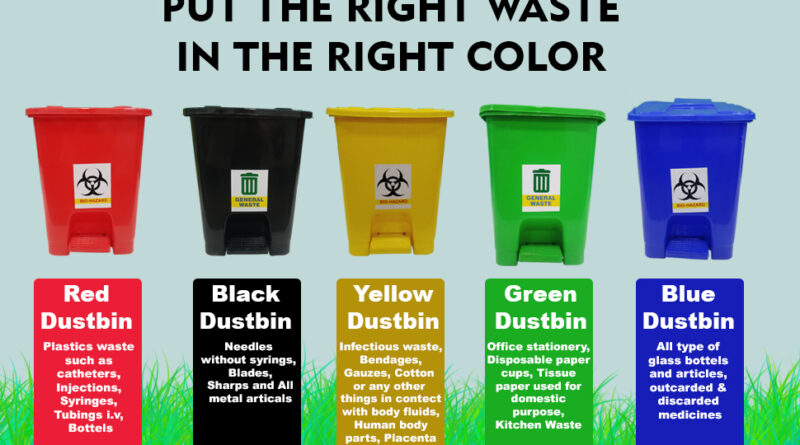Understanding the Colors: Red, Green, and Blue Dustbins
Garbage disposal is a crucial aspect of maintaining a clean and healthy environment. One way communities organize waste is through the use of colored dustbins. Each color signifies a specific type of waste, making it easier to sort and manage.
In this guide, we will delve into the difference between red, green, and blue dustbins, shedding light on their unique purposes.
Table of Contents
1. Red Dustbins: General Waste
The vibrant red dustbin is designated for general waste. This includes everyday items like food wrappers, tissues, and non-recyclable materials. When you come across a red dustbin, think of it as the catch-all for items that can’t be recycled or composted.
Ensuring that only general waste goes into the red bin helps streamline the disposal process and minimizes the impact on the environment.
2. Green Dustbins: Organic Waste
Green dustbins play a vital role in managing organic waste. These bins are specifically meant for items like kitchen scraps, food peelings, and other biodegradable materials. By separating organic waste in the green bin, communities can utilize it for composting purposes.
Composting not only reduces the amount of waste in landfills but also creates nutrient-rich soil for gardening and agriculture.
3. Blue Dustbins: Recyclable Materials
The blue dustbin is your go-to for recyclable materials. Items like plastic bottles, glass containers, paper, and cardboard should find their way into the blue bin. Recycling helps conserve resources and minimizes the environmental impact of producing new materials.
When using the blue dustbin, make sure to rinse or clean the recyclables to enhance the recycling process and ensure that the materials are accepted by recycling facilities.
Garbage Disposal Bins: A Unified Solution
Garbage Disposal Bins, commonly found in public spaces, often have a combination of red, green, and blue bins side by side. These bins are strategically placed to encourage people to sort their waste efficiently.
By incorporating all three colors in one location, it becomes easier for individuals to make informed decisions about where their waste belongs.
Practical Tips for Effective Waste Management:
- Educate the Community: Public awareness campaigns play a crucial role in promoting responsible waste disposal. Simple and engaging messages can help people understand the importance of using the right dustbin for their waste.
- Regular Bin Inspections: Periodic checks on bins ensure that the right waste is being deposited in the correct bins. This proactive approach helps maintain the efficiency of the waste management system.
- Collaboration with Local Authorities: Communities can work with local authorities to implement effective waste management programs. This collaboration can include providing educational materials, organizing clean-up drives, and ensuring the proper maintenance of disposal bins.
Conclusion
In conclusion, the use of colored dustbins is a practical and efficient way to manage waste in communities. Understanding the purpose of red, green, and blue dustbins empowers individuals to contribute to a cleaner and healthier environment. By making conscious choices about where we dispose of our waste, we collectively take a step towards sustainable living.
So, the next time you encounter these colorful bins, remember the simple mantra: red for general waste, green for organic waste, and blue for recyclables. Happy sorting!




